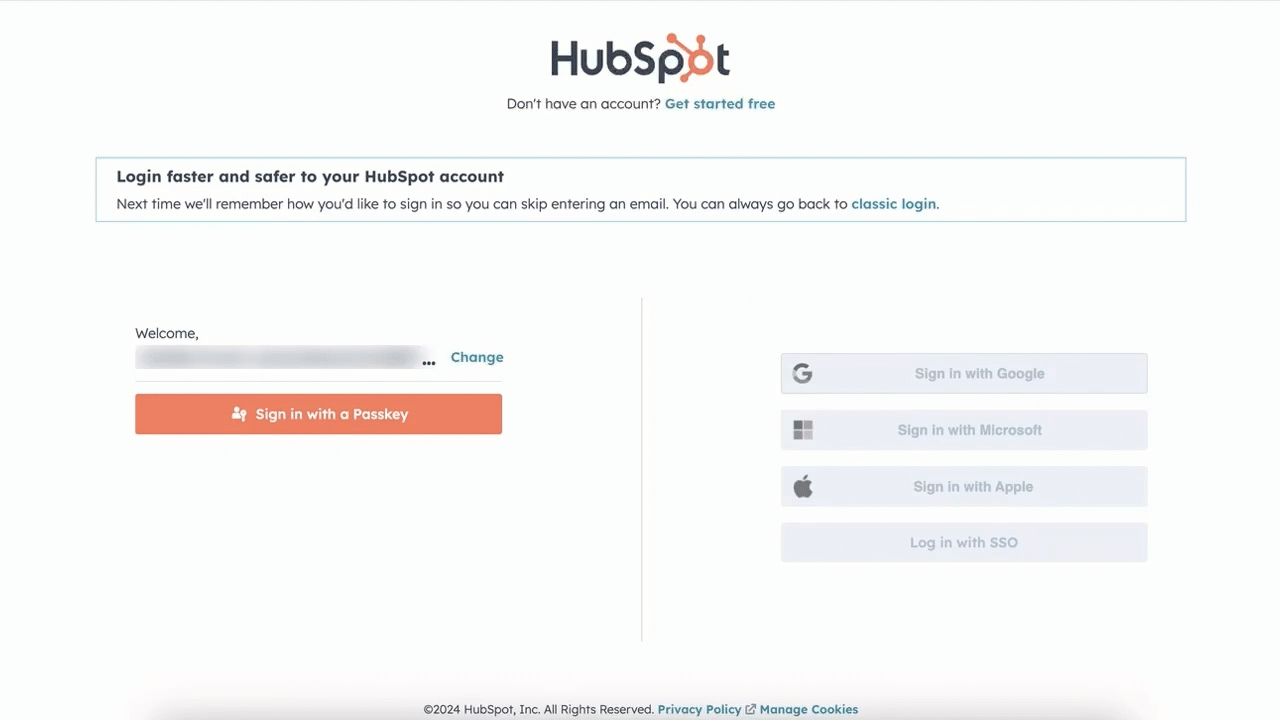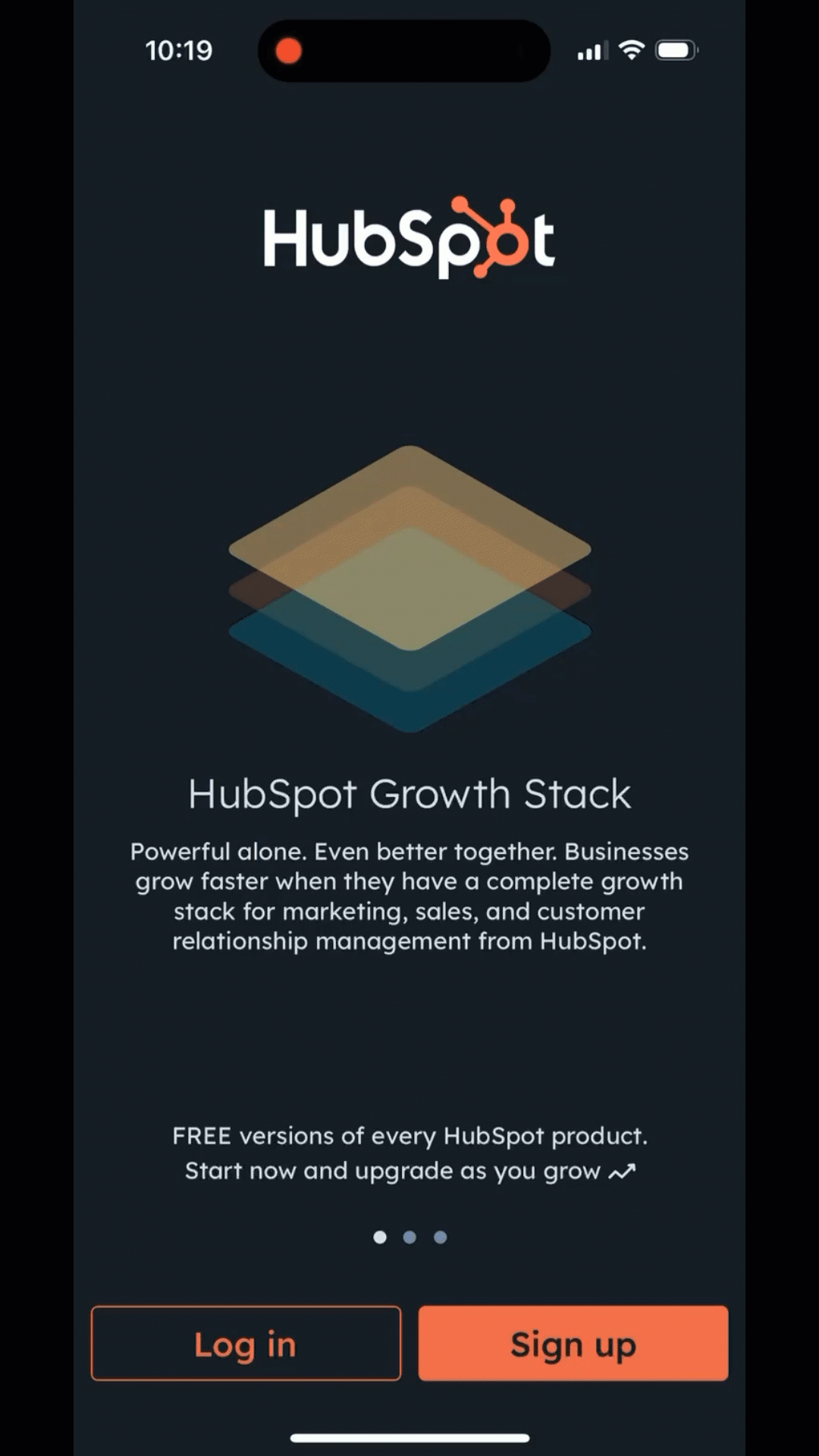- Knowledge Base
- Account & Setup
- Account Management
- Set up and log in with passkeys
Set up and log in with passkeys
Last updated: July 8, 2025
Available with any of the following subscriptions, except where noted:
Passkeys offer a secure alternative to passwords. Passkeys use public and private key credentials to securely allow you to log in to your account using a compatible device with biometrics, PIN code or a password manager. They're fully supported by the three main platforms (e.g., Google, Apple, and Microsoft), as well as all major third party password managers and FIDO2 compatible hardware tokens like Yubikey.
Why Passkeys
Passkeys are the future of authentication. A future that dramatically reduces the risk of an account being compromised because of stolen credentials. It solves for all the pain points of a password:
- You don’t have to remember the password.
- There's a 1:1 relationship between the passkey and the website or service (no risk of re-use across multiple platforms).
- It's compatible across devices and platforms by syncing across your platform accounts such as Google (Android) and Apple (iOS, MacOS), or your password manager.
- It's inherently multi-factor, combining something you have, and something you are. This eliminates the need for the legacy two-factor authentication methods that cause lots of user friction.
How to use passkeys with HubSpot
Set up a passkey for your personal login
To set up a passkey to use to log in to your account:
- In your HubSpot account, click the settings settings icon in the top navigation bar.
- In the left sidebar menu, navigate to General > Security.
- Click Set up passkeys.
- Depending on your settings, a passkey prompt will appear either natively on your device (e.g. MacOS, PC), using your browser, or a password manager.
- Confirm your passkey setup.
- The confirmed passkey will be displayed in your settings.

How to use passkeys across platforms
If using multiple devices (e.g., a MacBook and an Android device), you may need to set up more than one passkey. To set up an additional passkey:
- In your HubSpot account, click the settings settings icon in the top navigation bar.
- In the left sidebar menu, navigate to General > Security.
- Click Add another passkey.
- Depending on your settings, a passkey prompt will appear either natively on your device (e.g. MacOS, PC), using your browser, or a password manager.
- Confirm your passkey setup.
- The added passkey will be displayed in your settings.

Log in with a passkey on desktop
If you have a passkey configured, you'll see a passkey sign in prompt on your login screen. To log in with a passkey:
- On the login screen, enter your email address and click Next.
- Click Sign in with a Passkey.
- Confirm your passkey either through device biometrics, device PIN code, or prompt from your password manager.

Log in with a passkey on the iOS HubSpot app
If you have a passkey configured, you'll see a passkey sign in prompt on your iOS login screen. To log in with a passkey on the iOS HubSpot app:
Please note: passkeys cannot be set up on mobile, only on desktop. However, passkeys can be used to log in via desktop or mobile.
- On the app, tap Log in.
- Tap Log in with Passkey.
- Confirm your passkey through your authentication method on your mobile device.

Log in with a passkey on the Android HubSpot app
If you have a passkey configured, you'll see a passkey sign in prompt on your Android login screen. To log in with a passkey on the Android HubSpot app:
Please note: passkeys cannot be set up on mobile, only on desktop. However, passkeys can be used to log in via desktop or mobile.
- On the app, tap Log in.
- Tap Log in with a Passkey.
- Confirm your passkey through your authentication method on your mobile device.
Please note: a video of the Android login experience isn't included due to native Android privacy restrictions on screen recordings of login experiences. The login experience is similar to the iOS video shown above.
How to enforce passkeys as a login method for users
Super Admins can turn on passkeys as an option in allowed login methods, enforcing users to use passkeys to log in.
Please note: while passkeys are in the BETA period, at least 1 additional login type must be selected as an allowed login method.
To turn on the passkey login method for users:
- In your HubSpot account, click the settings settings icon in the top navigation bar.
- In the left sidebar menu, navigate to Security.
- Under the Login tab, in the Configure allowed login methods section, click to toggle the switch on.
- Select the Passkeys checkbox. Then click Save.
- Select the date the login methods should be enforced from in the dialog box, then click Save. If selecting today's date as the enforcement date, it may take up to 15 minutes before the login method is enforced.
Users affected by the change will receive an email notification of which login methods are allowed, and the enforcement date associated. The next time they are required to log in, they will be limited to the methods enforced.
Frequently asked questions
How do I know if I can use a passkey?
Nearly all current devices and browsers support passkeys. Learn more about detailed information on device and browser compatibility.
Can I use my passkey across multiple devices?
Passkeys are designed to be syncable, meaning they can span a platform ecosystem. If you use a Mac laptop, and have an iPhone, when you set up a passkey on your Mac, it saves to your iCloud keychain and syncs across so you can use them on all your Apple devices.
For those with cross-platform devices (e.g., PC and iPhone, Mac and Android), there are two options:
- You can create multiple passkeys for your account so they can be used across your devices. So you could create a passkey on your Mac and also create one on your Android device. Both will appear in your security settings.
- Use a cross-platform solution. Password managers are compatible across device platforms, allowing you to create one passkey to be used across all your devices.
Where can I learn more about passkeys?
It is generally recommended to use passkeys as a secure alternative to passwords, the standards we use for them come from the FIDO Alliance. You can read more about passkeys directly from them here.
Additionally, the National Institute of Standards and Technology (NIST), which produces guidelines and requirements on cybersecurity policies and controls for federal agencies, and often used as the standard for commercial organizations, published a supplement to NIST 800-63B -Digital Identity Guidelines — Authentication and Lifecycle Management. Incorporating Syncable Authenticators Into NIST SP 800-63B advises best practices on using passkeys in organizations.
I already don’t use a password for HubSpot to log in, should I switch to passkeys?
That’s a personal choice. The biggest step you can take in reducing risk and making it easier for you to access HubSpot is to not use a password. Ultimately, you’ll have to decide what works best for you and your organization.
I use Single Sign-On (SSO) to log in to HubSpot, can I use passkeys?
If you are required to use SSO to login, you aren't eligible to use passkeys. If your organization doesn't require SSO, then you can.
Can I use passkeys on mobile (Android/iOS)?
Yes. You can use a passkey to log in to the HubSpot mobile app. At the current time, passkeys must first be created from HubSpot desktop.
Are there any limitations in using passkeys with HubSpot?
You cannot use passkeys in the Outlook app, only when using Outlook in a browser:- If you have the Microsoft Outlook Sales Add-In on your PC or Mac Outlook app, you cannot use your passkey to log in, as the embedded web browser within Outlook is not compatible with passkeys.
- If you use the HubSpot Sales Extension and Outlook web experience via your web browser, you will be able to use your HubSpot passkey to log in.